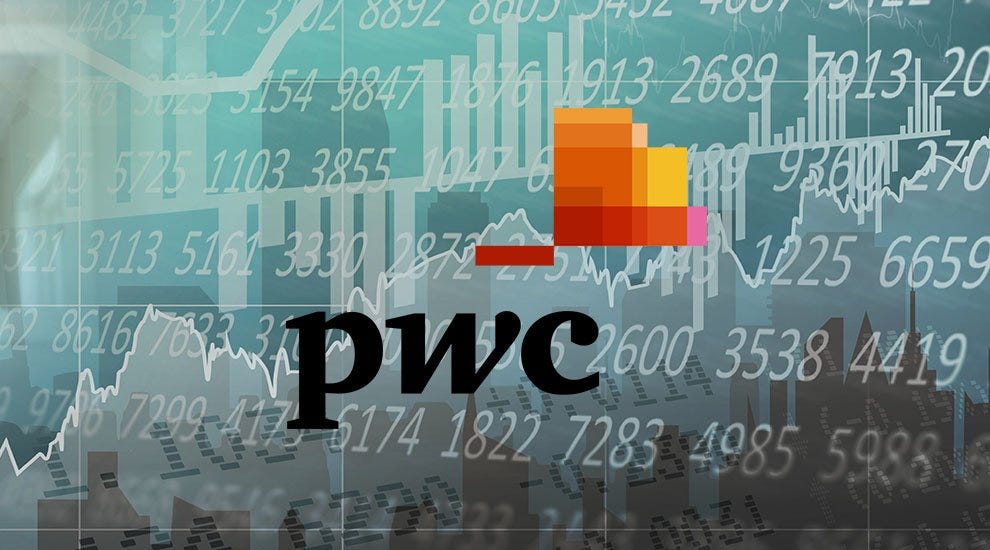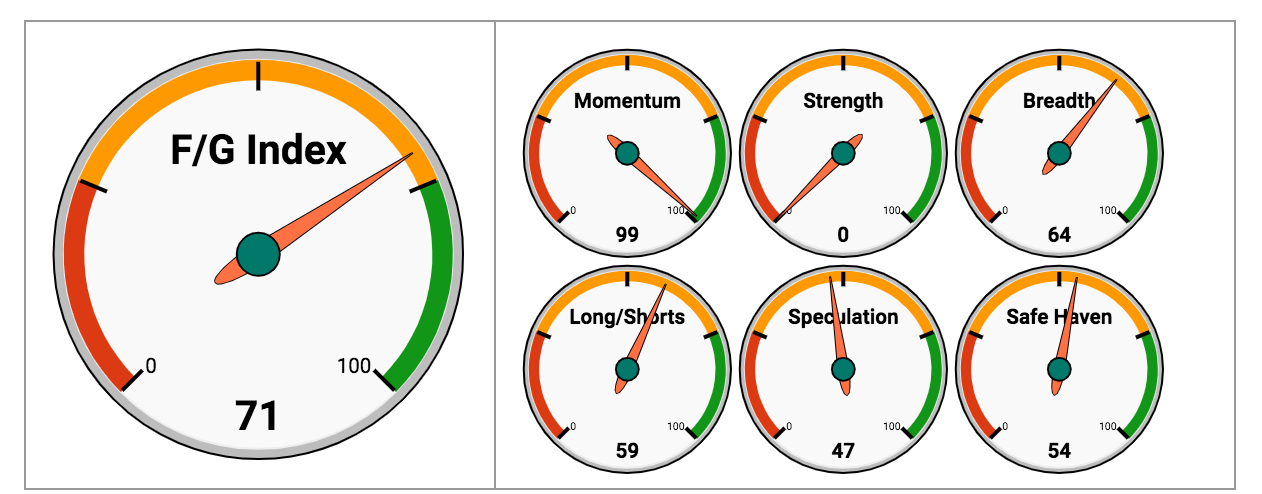CryptoAM: PwC Backs a Stablecoin, Binance Gets Rid of Listing Fees, and Telecom Goes Blockchain
Tuesday, October 9th

⛵️Hope you all made use of the three day weekend, there’s a lot to catch up on this week. We’ve got exchange news, regulatory news, blockchain news, and crypto news and more coming your way. As always, feel free to join the discussion in our Telegram group!

3 things you need to know:
One: Binance is now disclosing all listing fees, and donating the proceeds to charity

According to a blog post made on Monday, the leading exchange will now disclose all listing fees and donate the entirety of the listing revenues to charity. The donations will be facilitated through its charity division, the Blockchain Charity Foundation.
Key details:
Traditionally, the exchange listing process is opaque and quite frankly somewhat sketchy; Binance’s is becoming a leader in transparency with this new exchange fee disclosure and donation policy.
All listing fees are now effectively donations, and projects can bid on the donation/listing fee amount. Binance claims that the donation amount has no impact on the outcome of applications (some people don’t buy it though).
It’s great to see some social good come out of the controversial listing fee model. Being a market leader, Binance is sure to attract attention from competing exchanges, who may even move to replicate Binance’s new model. Good will goes a long way, and seeing Binance take the lead on this.
The bottom line: Transparent listing fees is huge step forward for the step, and lends some much needed legitimacy to the space. Listing fees are one of the biggest criticisms of exchanges, as they often are incredibly exorbitant (>$1M) and often force out the good projects in favor of the rich ones.
Two: PwC Is Backing a USD Stablecoin Cryptocurrency in Challenge to Tether

PwC is rolling out a partnership with Cred, to provide support for their newly issued stablecoin. Apparently, PwC has a US Blockchain and Cryptocurrency Lead — Grainne McNamara, who had this to say:
“We are eager to leverage our proven industry experience to support a quickly developing asset class and its associated market infrastructure components. We believe this exploration of the blockchain infrastructure and associated operational frameworks can help the industry develop an increased level of comfort.”
PwC will be leveraging it’s fantastic reputation as an auditor and accounting to lend some (cred)ibility to Cred.
As a reminder, there are three types of stablecoins:
Collateralized (MakerDAO, Bitshares)
Fully backed (Tether, Paxos, GUSD)
Algorithmic (Basecoin, Carbon)
Paxos, Terra, GUSD, and CircleUSD are are just some of the stablecoins that have been released over the last couple months. Recently there has been a something of a stablecoin Cambrian Explosion, with new coins popping up in increasing regularity. We’ve seen stablecoin projects raise millions in funding with no clear revenue models, or traction. One can only wonder how many stablecoin projects the cryptocurrency ecosystem can support.
It’s clear the majority of this frenzy is being driven by mistrust of Tether, which is currently the dominant stablecoin — for example, Paxos is trading at a premium to Tether.
Go deeper: read the full announcement by PwC
Three: UK telecom regulator receives a grant to deploy blockchain technology to manage telephone numbers.

The Regulators' Pioneer Fund announced on Friday that it would award nearly £700,000 (just under $915,000) to Ofcom, the national telecommunications regulatory authority, "for a project that uses blockchain technology to improve U.K. telephone number management."
Mansoor Hanif, Ofcom Chief Technology Officer was optimistic about the Blockchains potential in the telecom industry:
“We will be working with industry to explore how blockchain could make it quicker and easier for landline customers to switch providers while keeping their number — as well as reducing nuisance calls. And we’ll expand our research into other areas where innovative technologies such as [how] blockchain could be applied to benefit consumers.”
Key details:
The OfCom is involving industry participants to test the movement and management of millions of phone numbers on the blockchain.
Previous attempts to use centralized databases have failed due to collaborative barriers and prohibitive costs.
Other countries have been looking into blockchain use cases in telephone management including China and South Korea, as telecom presents itself to be a large industry for potential blockchain applications.
The bottom line: It is clear that we are in the building phase in the blockchain sector, and it’s promising to see more cooperation between government and industry in order to release viable blockchain pilots. Expect to see many more grants surrounding blockchain tech coming soon. If you have a blockchain startup, don’t ignore the potential for government applications!
Also in the news:
Bitfinex Slams Insolvency Allegations, Reveals Part of Bitcoin (BTC), Ether (ETH), and EOS Holdings
Billion Dollar Crypto Fund, Pantera, is down 72% YTD and 22% in August
IBM's Food Blockchain Is Going Live With a Supermarket Giant on Board
Market Outlook:
Quick Take

Direction: We are ranging again between 6500-6700. Those are the absolute crucial levels. Volume is drying up, and volatility is shrinking. The next move will be large. There are large stops placed at both the 6500 and 6700 level for longs and shorts respectively, and I believe . We are directionless as of now, but whichever one of those levels breaks first will likely trigger a follow through of a 3-5% further increase/drop.
On balance volume is decreasing, suggest a drop is more likely than a price increase — but it’s better to treat this range as a 50/50 shot as of now.
Key Support: 6500
Key Resistance: 6700
Actions: Short BTC, heavy on alts right now. Alts outperform when BTC is ranging, so I’ve been increasing my exposure to altcoins while keeping my short on BTC as a hedge to protect downside. Taking profits early and often on alt positions.
Fear & Greed
F&G suggests a pullback is coming soon.

Here’s a reminder of what these criteria mean

CoinSavage: Truth in Crypto
There’s a big problem with crypto trading. Too many fraudulent actors. People actually take trade signals from random people in twitter— with no way to vet anything.
CoinSavage is the platform to change all of that. They have built a fantastic (and free) platform where all portfolios, trades, and ideas are open sourced and timestamped. No more hindsight TA, now you can actually see for yourself if people are performing, and prove to your audience you know what you’re talking about.
Around the corner:
What I’m reading today:
How Coinbase is Improving Bitcoin Payments & Reliability
If you bear with me today, I’m going to be exploring a relatively interesting technical update that Coinbase recently rolled out to improve Bitcoin payments.
As we all know, Bitcoin is often a not-so-great method for transferring value. Last December, transaction costs were hovering around $40 with waiting times of hours. Over the last few months this has significantly improved mostly due to transaction volumes declining — but it could come back at any time if a bull market returns!
For institutions like Coinbase though, this presents an issue. How are they supposed to appeal to retail customers when wait times and costs are high? Enter the Child Pays for Parent protocol.
“To address these challenges, we leaned on a well-known procedure which uses economic incentives enabled by the Bitcoin protocol for improving confirmation time of transactions: Child Pays for Parent (CPFP), and we’ve implemented this at Coinbase scale, sometimes using it to rescue thousands of transactions in a single day.”
Before we dive into understanding this protocol, let’s first figure out how a Bitcoin transaction works.
Unlike credit cards, Bitcoin payments have fluctuating wait times and fees. When you send a Bitcoin payment, you get to set your transaction fees. Say, at $1. Miners (the people validating transactions) then process all transaction received, and generally do so by validating the most transactions with the largest fees, and working their way down. In times of heavy network usage, fees go up as people attempt to get their transactions through (the more expensive fee you propose, generally the faster your transaction will be confirmed).
You can see now, how this might be end up with a problem.
To illustrate this fact, let’s look at an example. Consider two Coinbase customers, Alice and Bob, both of whom would like to send some bitcoin to pay for a transaction on their way to work in the morning. Alice submits her transaction at a time when estimated fees are 5 satoshis/byte, a relatively low fee in today’s market. Seconds later, the network suddenly becomes very busy, and thousands of transactions.
Bob then submits his transaction with a fee of 25 satoshis/byte, where the fee is much higher than Alice’s because of the network congestion.
Seconds later a block is mined; Bob’s transaction is included because of its high fee, but Alice’s remains pending. The congestion continues, and transactions are submitted with ever-growing fees.
Alice’s transaction is now “stuck.” The funds won’t arrive at their destination, and she therefore can’t do anything with the funds, until the flood recedes and the fee rate drops.
So, how do we fix this situation?
We use something called a child payment.
Let’s say you have 5 Bitcoin.
If you want to pay someone 1 Bitcoin, you’re actually obligated to use the entire 5 Bitcoin balance to pay them, and you get back 4 Bitcoin in change.
It’s analogous to using all the money in your wallet every time you buy something.
Now, let’s say that 1 Bitcoin you’re paying someone gets stuck, because you paid a fee that was too low. You now have 4 Bitcoin left in your wallet, and 1 Bitcoin that’s broadcast to the network, without a home. Those 4 Bitcoin in your wallet cannot be used until the first Bitcoin transaction is confirmed. The 1 Bitcoin transaction is called the “parent” transaction. Any subsequent transactions from that 4 Bitcoin are called “child” transactions.
Now, here’s the important part. Child transactions cannot be confirmed before their parents. So if you attach a nice, large free to the child transaction — miners will confirm the parent tx, so they can confirm the child tx and collect that nice fee.
Child Pays For Parent in a nutshell. The great part? Coinbase is automatically covering these fees for you! They’ve started to roll out CPFP, and will now send child payments with fees to speed up any transactions that get stuck.
Hopefully you learned something from this, and as always — feel free to join the CryptoAM fam on Telegram :)
Join the conversation on Telegram and Twitter
If you ❤️ our newsletter, tell your friends about us!
CryptoAM is a Ledger Group project. We offer consultancy, advisory and research services for established companies and start-ups interested in the blockchain & digital asset space.
